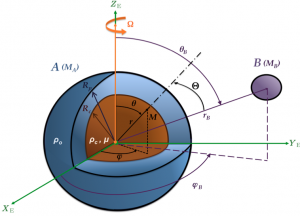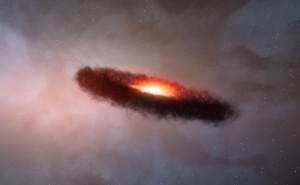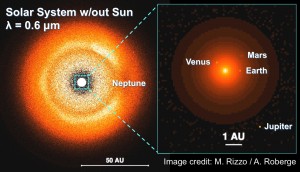
Illustration of tidal interactions. From ftp://ftp.osupytheas.fr/pub/symposiumCOROT/posters/Francoise-Remus-Poster.pdf.
I attended a talk at the US Naval Observatory on Friday given by newly minted Dr. Françoise Remus of the Paris Observatory. Remus discussed tidal interactions between the Jovian or giant planets and their satellites.
Tides are well known here on Earth, where the Moon raises tides in the oceans on a regular basis, as seen in the Chesapeake Bay. The moons of Jupiter and Saturn also raise tides on those planets, in the planets’ atmospheres and deep interiors.
The tides raised on these planets interact gravitationally with the satellites and influence the moons’ orbits, as for the Earth’s Moon — tides on the Earth push the Moon away from the Earth a few centimeters every year.
On Earth, drag in the oceans provides tidal dissipation that drives the Moon’s orbital evolution. Tides raised on Jupiter and Saturn apparently also experience dissipation, but since those planets don’t have shallow oceans, it’s not clear what generates the dissipation.
For her graduate work, Remus created complex models to explain tidal dissipation within Jupiter and Saturn and showed that the planets’ rocky and icy cores, deep within their interiors, play a key and previously under-appreciated role. Her work has broad implications, from helping us understand these planets’ mysterious interiors to explaining the origins of the planets’ complex satellite systems.


